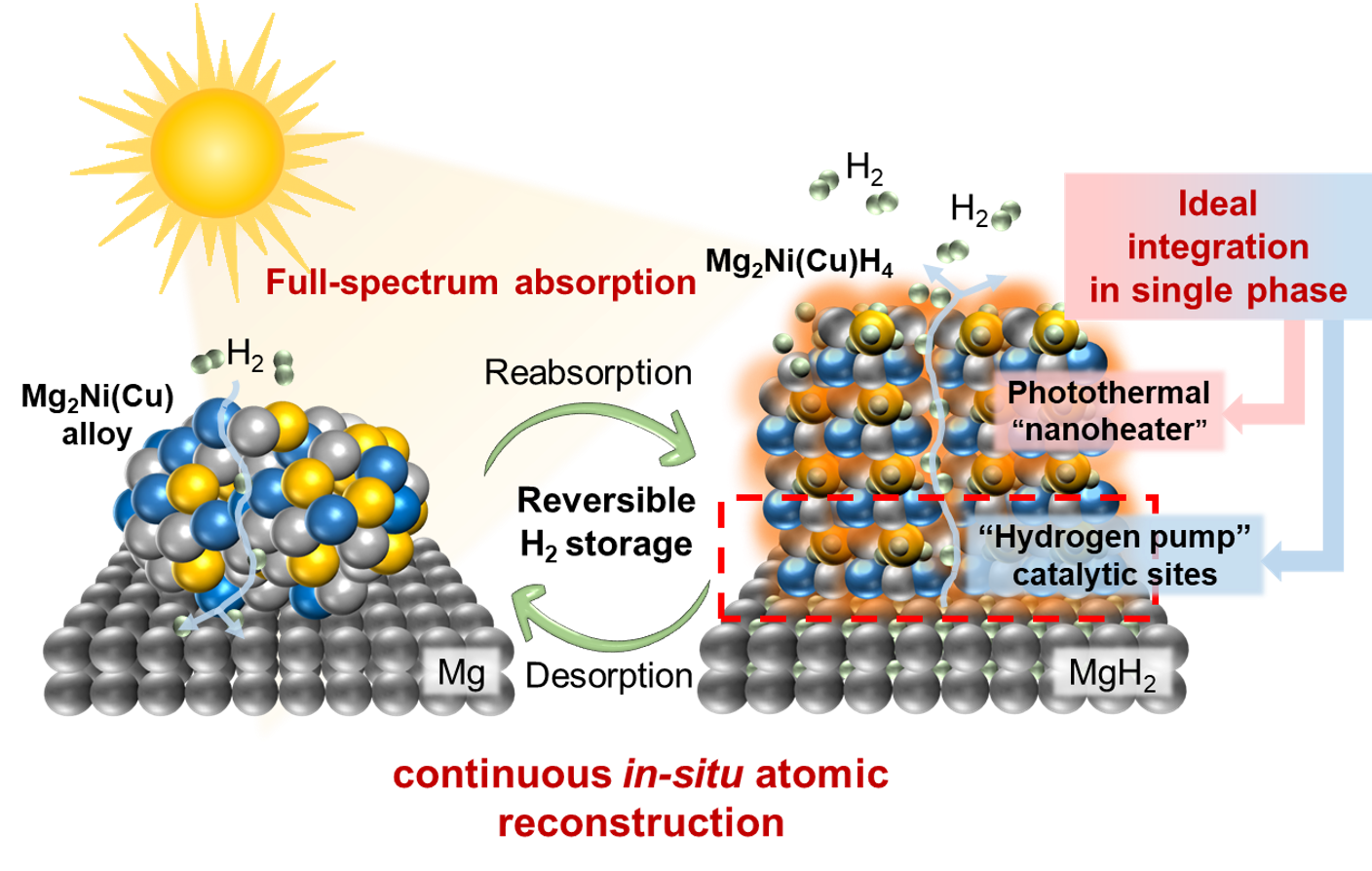Xiaoyue Zhang, Shunlong Ju, Chaoqun Li, Jiazheng Hao, Yahui Sun, Xuechun Hu, Wei Chen, Jie Chen, Lunhua He, Guanglin Xia*, Fang Fang*, Dalin Sun, Xuebin Yu*
Nat. Commun., 2024, 15, 2815.(![]() PDF File.pdf)
PDF File.pdf)

Abstract:Reversible solid-state hydrogen storage of magnesium hydride, traditionally driven by external heating, is constrained by massive energy input and low systematic energy density. Herein, a single phase of Mg2Ni(Cu) alloy is designed via atomic reconstruction to achieve the ideal integration of photothermal and catalytic effects for stable solar-driven hydrogen storage of MgH2. With the intra/inter-band transitions of Mg2Ni(Cu) and its hydrogenated state, over 85% absorption in the entire spectrum is achieved, resulting in the temperature up to 261.8 °C under 2.6 W cm−2. Moreover, the hydrogen storage reaction of Mg2Ni(Cu) is thermodynamically and kinetically favored, and the imbalanced distribution of the light-induced hot electrons within CuNi and Mg2Ni(Cu) facilitates the weakening of Mg-H bonds of MgH2, enhancing the “hydrogen pump” effect of Mg2Ni(Cu)/Mg2Ni(Cu)H4. The reversible generation of Mg2Ni(Cu) upon repeated dehydrogenation process enables the continuous integration of photothermal and catalytic roles stably, ensuring the direct action of localized heat on the catalytic sites without any heat loss, thereby achieving a 6.1 wt.% H2 reversible capacity with 95% retention under 3.5 W cm−2.
